Location: Minnippi Parklands
Type: Event
Organiser: Bulimba Creek Catchment
Contact: Phone 3398 8003 or email [email protected]
SOLD OUT – WAITLIST ONLY. Cost: $20. To make a booking, please click here.
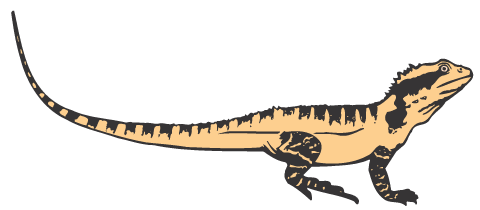
by mccgadmin
Location: Minnippi Parklands
Type: Event
Organiser: Bulimba Creek Catchment
Contact: Phone 3398 8003 or email [email protected]
SOLD OUT – WAITLIST ONLY. Cost: $20. To make a booking, please click here.
by mccgadmin
We’re all familiar with the concept of bird song …
But it appears that fish can be equally vocal, using a variety of sounds like grunting, squealing and gurgling to gain access to food and mates, and possibly for social interaction.
Dr Simon Linke, of the Australian Rivers Institute at Griffith University, is using “fish song” in a research project which is adopting a novel approach to monitoring the waterway health.
Using underwater microphones, Dr Linke’s team has catalogued every biological sound in the Einasleigh River in Far North Queensland. The sounds are identified by computer, providing a snapshot of the activity of fish species within the waterway at any given time.
Dr Linke suggests that the use of eco-acoustics could potentially also be used to locate insects and invasive species such as Tilapia, which make noises when they spawn or defend their nests.
This innovative project was reported on ABC News recently. It will certainly be worth following its progress. To learn more, visit the ABC News Website.
An online Griffith University article from March 2018 provides further information: Eavesdropping on fish to measure river health.
An un-related article by the Acoustical Society of America provides some insight into the reasons for fish sounds: How Important are fish Sounds for Feeding, Contests and Reproduction?
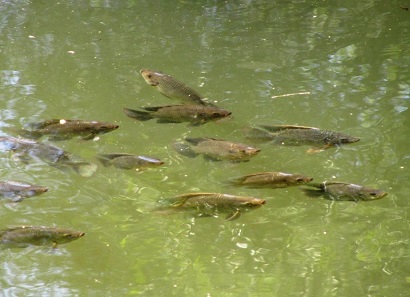
Tilapia in Moggill Creek – courtesy of Jim Pope
Perhaps we’ll soon have a new, non-invasive way to locate Tilapia in our catchment!
by mccgadmin
There is still time left to lodge feedback regarding the Brisbane City Council’s draft Mt Coot-tha Zipline Land Management Plan.
You will find information about the project on the Council website.
For an alternative viewpoint, you may wish to visit the community-driven Mt Coot-tha Protection Alliance website which outlines several community concerns.
We strongly encourage you to voice your opinion before 31 DECEMBER. To open the survey, please click here.
by mccgadmin
We couldn’t let the New Year arrive without paying tribute to the winner of the Young Person’s category in our 2018 Photo Competition.
Alexander Davies is a prolific and talented young photographer.
Unfortunately, when our Newsletter editor Cathi Lawrence put a call out for the stories behind the winning photos for our Summer Newsletter, Alexander’s story missed the deadline.
So we’ve decided to publish it on the website instead! Here is Alexander’s winning shot and the story behind it for your enjoyment! Well done and thank you Alexander!
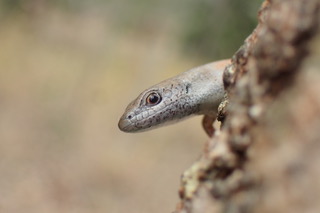
Out of all the images I entered into the competition, I enjoyed this one the most.
The image depicts a Lively Rainbow Skink (Carlia vivax) peeping from behind a dead stump.
The image showcases their inquisitive nature, instead of running away or scampering off like a lot of small skinks they will actively investigate you, especially when sitting still trying to photograph them.
These skinks are absent in suburbia due to their love for tussock grasses and native ground covers, however they are very common along with several other Carlia sp. in these areas.
They are actually not a very common skink in the Moggill Creek Catchment and are restricted to areas of virgin Open Eucalypt forest. They shun moist areas, though they may turn up in vine scrub, wallum country or the edges of swamps.
This photo was taken at Mt Crosby.
by mccgadmin
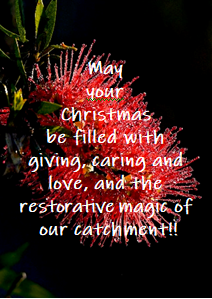
by mccgadmin
Let us entertain you over the Christmas break! Our Summer 2018 Newsletter is a treasure.
For starters, it features a wonderful collection of stories behind winning entries in our Photography Competition. This makes for very entertaining reading!
Learn what climate change has in store for birdlife, bid farewell to some of our longest standing volunteers and read the latest on the MCCG Canetoad Challenge.
We have a report from a thriving Bushcare group and a snapshot of the MCCG’s 2018 successes provided by our Chairman, Jim Pope.
There are plenty of other great articles on a number of topics – we guarantee to keep you captivated!
A heartfelt thank you to our Newsletter Editor Cathi Lawrence and to all those who took time to the submit the diverse range of content for this issue.
To start reading, please click the “Download our current newsletter” link on this page.
REMEMBER: we’re always on the lookout for new local stories! If you have one to share, please START WRITING! You can send your story or request more info from our Newsletter Editor at [email protected]
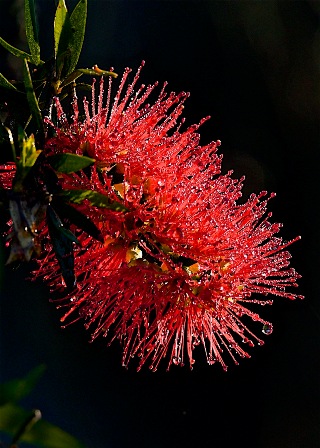
‘Morning Mist on Red Bottlebrush’, an entry by Ed Frazer in our 2018 Photo Competition.
Open your newsletter to see more winning entries and the stories behind them!
by mccgadmin
Many of our wonderful bushcare volunteers will enjoy a well deserved break over Christmas!
For details about our working bee dates during the holiday period, please visit our Working Bee Calendar.

by mccgadmin
You may not recognise the appearance of the Eastern Koel in this short video of Tim Sigg’s, but if you watch it through to the end, there’s a good chance you’ll recognise the bird’s call as one you’ve heard recently.
Eastern Koels visit Australia from Indonesia and New Guinea for an annual Summer vacation. They holiday along our Eastern seaboard, as far South as Victoria. They are here to breed right now and will stay till around April.
There is some speculation that climate change is extending their range further South. Interestingly, the further South they travel, the earlier they return home from vacation.
The Eastern Koel (Eudynamys orientalis) is a cuckoo and in true cuckoo fashion it is a brood parasite. It lays its eggs in the nests of other species – generally local birds such as wattlebirds and figbirds. When the cuckoo chick hatches it forces the eggs and chicks of the resident birds out, and the parents of the resident bird take responsibility for feeding the invader.
The Eastern Koel is a striking bird. The male has glossy black plumage with red eyes, whilst the female is spotted black and white. They are generally shy of people so are usually heard more than they are seen! We are grateful therefore to Carson Dron for sharing his lovely photo of a female, taken in September at Anstead.
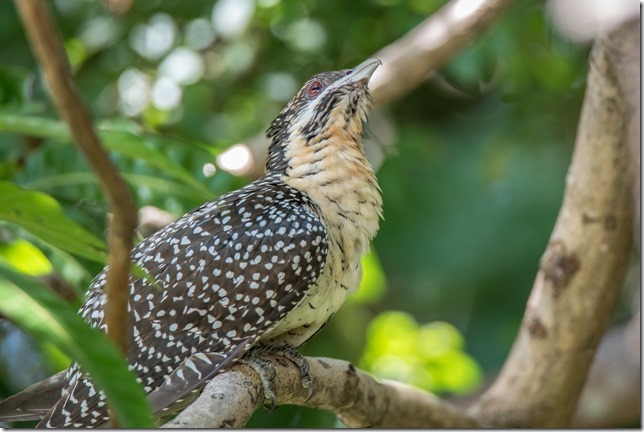
To learn more about our summer visitor, please visit our Online bird list and scroll down to the Eastern Koel. You will see more local photos, together with links to relevant articles of Jim Butler’s Feather Fascination.
* link used with the permission of Tim Siggs
by mccgadmin
The holidays are approaching fast. and CWCN again has a great program ready for our young crowd. Lots of hands-on engagement and fun learning, and all about the environment and/or sustainability. Of course, there is a small healthy morning tea included in all activities. All activities take place at the CWCN Centre, 47 Hepworth St, Chapel Hill (UBD 178 A11). They start at 9:30am and finish at 12:00 noon. We charge a fee of $15 per child ($10 for CWCN members).
Thursday, 10th January 2019
Fenella Flutterwing & Munching Mike – Enviro Detectives at Work Investigating Butterflies
Prep to early primary school age
Who doesn’t like butterflies? Seeing them makes us feel happy, and we know it’s summer. We look for young detectives who want to know more about butterflies. What better way than finding all the answers by putting wings on and becoming a butterfly for one morning. This is learning by having fun! And we top it all by celebrating a butterfly wedding!
Thursday, 17th January 2019
Tristan Truffle and Pixie Cap — Enviro Detectives at Work Hunting Fungi
Primary school age
What’s all this talk about fairy rings, witch’s butter, little pixies, ghost and ghoul fungi and toadstools? Our enviro detectives have a lot of work to do. They’ll figure out what mushrooms are, how they work, and why they are so important. Then there is also the issue of solving a crime, just the right thing for our detectives. This truly is a morning for investigators who are also budding scientists. Lots of hands on activities promise fun.
Tuesday, 22nd January 2019
The Fantastic Plastic, Tin & Cardboard Concert Band!
Prep to primary school age
Yeah! We are making music. Before we give our first concert, we have to understand what sound is and how it comes about. That alone is lots of fun because we hear elephants, see rice dance, feel and see sound move. Then we have to create our very own instruments. Can an old shoe box be a ukulele, a pipe, a trumpet or a raspberradoohoo (I bet you want to know what that is)? Can drinking straws sing, beakers imitate animals, can kitchen rolls sound like rain? Have you ever played a thongaton? We’ll have loads of fun!
by mccgadmin
The Cattle Egret’s story is so interesting!
We have all seen these white birds sitting atop of livestock. And yet, during their breeding season the Cattle Egret’s plumage changes so much (and so beautifully) that they look like an entirely different species!
This month Jim Butler brings us some wonderful facts about these “New Australians” – relatively recent arrivals to our shores.
You will learn about their global expansion and breeding and feeding habits, and the reasons behind their affiliation with livestock.
Please click here to open the November/December 2018 issue of Feather Fascination.
